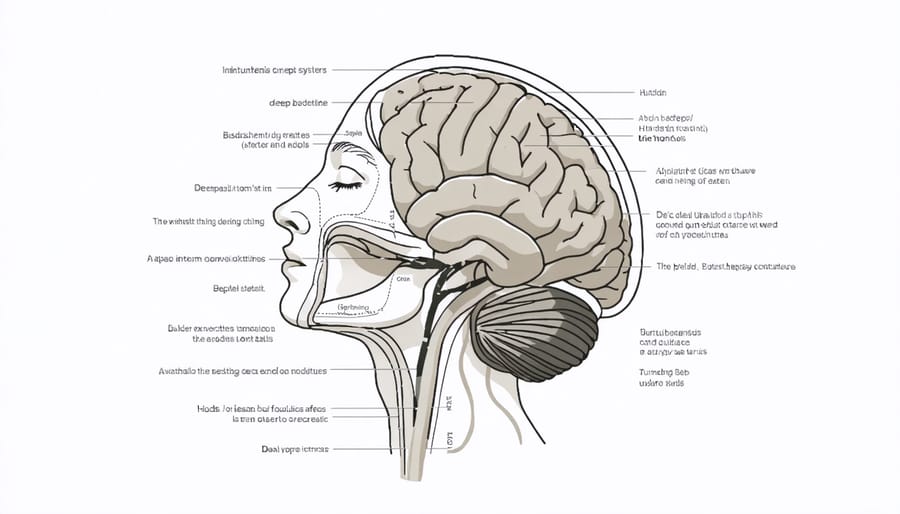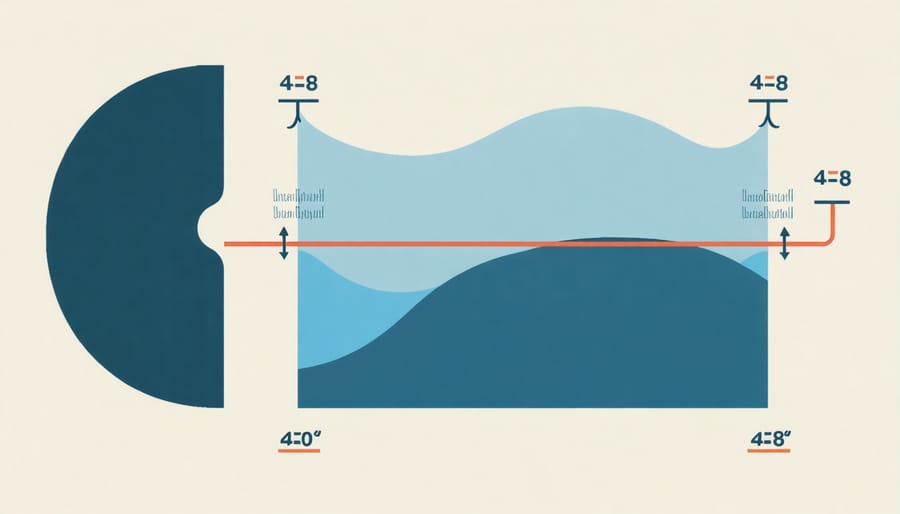
Take a deep breath right now – feel your diaphragm expand like a balloon as anxiety-melting oxygen floods your body. In moments of overwhelming stress or racing thoughts, your breath becomes your most powerful, always-accessible tool for reclaiming calm and clarity. As someone who’s battled anxiety both personally and professionally as a wellness coach, I’ve discovered that strategic breathing isn’t just a temporary fix – it’s a science-backed superpower that can transform your relationship with stress. Whether you’re dealing with deadline pressure, social anxiety, or those middle-of-the-night worry spirals, these proven breathing techniques will help you tap into your body’s natural relaxation response within minutes. Let’s explore how something as simple as conscious breathing can become your go-to strategy for finding peace amidst life’s chaos – no special equipment or training required, just your breath and a few moments of mindful attention.
Why Your Breath is Your Best Anti-Anxiety Tool
Have you ever noticed how a few deep breaths can instantly make you feel calmer? It’s not just in your head – there’s fascinating science behind why breathing is your body’s built-in anxiety management system. As someone who’s experienced those overwhelming moments of anxiety myself, I’ve learned that understanding this connection can be incredibly empowering.
Your breath directly influences your autonomic nervous system, which controls your body’s stress response. When you’re anxious, your sympathetic nervous system (think “fight or flight”) kicks into high gear. But here’s the amazing part: conscious breathing can activate your parasympathetic nervous system (the “rest and digest” mode), essentially hitting your body’s natural calm button.
Think of it like having a remote control for your anxiety levels. When you slow down your breathing, you’re sending a clear message to your brain that you’re safe, which triggers a cascade of calming effects throughout your body. Your heart rate slows down, your blood pressure decreases, and those stress hormones begin to dissipate.
What makes breathing so powerful is that it’s always available to you – no special equipment or perfect circumstances needed. Combined with mindfulness-based stress reduction, conscious breathing becomes an even more powerful tool for managing anxiety.
The beauty of breath work is that it puts you back in control. Just knowing you have this tool at your disposal can make anxiety feel less overwhelming. It’s like having a trustworthy friend always by your side, ready to help you find your calm center whenever you need it.

Simple Yet Powerful Breathing Techniques
The Calming 4-7-8 Breath
Let me share one of my favorite breathing techniques that has been a game-changer in helping me manage anxiety through mindful practices. The 4-7-8 breath, developed by Dr. Andrew Weil, is like a natural tranquilizer for your nervous system.
Here’s how to do it: Find a comfortable seated position and rest your tongue gently behind your upper front teeth. Start by exhaling completely through your mouth, making a whoosh sound. Then, close your mouth and inhale quietly through your nose for a count of 4. Hold your breath for a count of 7. Finally, exhale completely through your mouth (making that whoosh sound again) for a count of 8.
What makes this technique so special is the way it activates your parasympathetic nervous system – your body’s natural relaxation response. I love using it before important meetings or when I’m lying in bed with racing thoughts. The beauty of 4-7-8 breathing is that you can practice it anywhere, anytime, without anyone even noticing.
For beginners, I recommend starting with just four cycles and practicing twice a day. As your body adjusts, you might notice improved sleep, reduced anxiety, and better stress management. Remember, it’s normal to feel a bit light-headed at first – that’s just your body getting used to the new oxygen flow. Take it slow, and be patient with yourself as you develop this powerful calming skill.

Box Breathing for Instant Relief
Ever notice how Navy SEALs stay calm under pressure? One of their secrets is box breathing, and I’m excited to share how this technique has become my go-to method for finding instant calm during hectic workdays or pre-presentation jitters.
Box breathing is beautifully simple: imagine tracing a square with your breath, each side representing a count of four. Here’s how to do it:
1. Exhale completely through your mouth
2. Inhale through your nose for 4 counts
3. Hold your breath for 4 counts
4. Exhale through your mouth for 4 counts
5. Hold empty for 4 counts
6. Repeat the cycle
I love using this technique during those moments when life feels overwhelming. Whether you’re stuck in traffic, preparing for a difficult conversation, or trying to wind down before bed, box breathing can be your anchor to calmness.
Pro tip: Start with just two or three cycles when you’re learning. As you become more comfortable, you can extend your practice to 5-10 minutes. I keep a small square sticky note on my computer monitor as a gentle reminder to practice throughout the day.
Remember, the beauty of box breathing lies in its simplicity and discretion – you can do it anywhere, anytime, without anyone noticing. It’s like having a secret superpower for stress management right at your fingertips.
The ‘Ocean Breath’ Technique
When I first discovered the Ocean Breath technique (also known as ujjayi breathing), it felt like unlocking a secret superpower for calming my anxious mind. This ancient breathing practice gets its name from the gentle, wave-like sound you create – similar to the soothing rhythm of ocean waves rolling onto the shore.
The beauty of Ocean Breath lies in its simplicity and effectiveness. Start by taking a deep breath through your nose, then slightly constrict the back of your throat as you exhale – imagine you’re trying to fog up a mirror, but with your mouth closed. This creates a soft, audible whisper that sounds just like the sea.
What makes this technique so powerful for anxiety is its dual action: the rhythmic sound helps drown out mental chatter, while the controlled breath naturally activates your body’s relaxation response. I’ve found it particularly helpful during those moments when anxiety starts creeping in during meetings or while stuck in traffic.
The best part? You can practice Ocean Breath anywhere, anytime, without drawing attention to yourself. Whether you’re sitting at your desk, waiting in line at the grocery store, or lying in bed unable to sleep, this technique offers a discrete way to find your calm center. Start with just three to five breaths and notice how your shoulders relax and your mind becomes clearer with each ocean-like wave.
Making These Techniques Part of Your Daily Routine
Morning Mindful Moments
Starting your day with intentional breathing can set a peaceful tone for the hours ahead. I’ve found that dedicating just five minutes each morning to focused breathing makes a remarkable difference in my anxiety levels throughout the day. Try this simple routine: Before reaching for your phone or jumping into your to-do list, sit comfortably on the edge of your bed or in a cozy chair. Place one hand on your belly and one on your chest. Take three deep breaths to center yourself.
Now, practice the 4-7-8 technique: inhale for four counts, hold for seven, and exhale for eight. Repeat this pattern four times. Follow with two minutes of natural breathing while mentally noting three things you’re grateful for. As you finish, set an intention for your day while taking three more mindful breaths.
This morning ritual becomes easier and more rewarding with practice, creating a calm foundation for whatever challenges lie ahead.
Quick Desk-Side Stress Relief
When stress hits during your workday, you don’t need to step away from your desk to find relief. I’ve discovered some subtle breathing techniques that won’t draw attention in an office setting. Try this simple exercise: Place both feet flat on the floor and sit up straight but comfortable. Rest your hands on your desk or lap, and take a gentle breath in through your nose for four counts. Hold briefly, then exhale slowly through slightly parted lips for six counts.
Another favorite of mine is the “coffee break breath” – while waiting for your coffee to brew, use those precious moments to take three mindful breaths. Simply breathe in while counting to three, pause, then breathe out for three counts. You can even practice this during emails or between meetings.
Remember, these techniques work best when done regularly. I like setting quiet reminders on my phone to prompt these breathing moments throughout my workday.

Remember, your breath is always with you, making it one of the most accessible tools for managing anxiety. Whether you’re sitting in traffic, preparing for a presentation, or simply feeling overwhelmed by life’s daily challenges, these breathing techniques are your faithful companions, ready to help you find calm whenever you need it.
I’ve witnessed countless women transform their relationship with anxiety through these simple yet powerful breathing practices. One of my clients, Sarah, went from dreading her morning commute to using it as dedicated time for breath work, turning a previously stressful experience into a moment of self-care.
The beauty of these techniques lies in their simplicity – they require no special equipment, no expensive classes, and no specific location. You can practice them anywhere, anytime, without drawing attention to yourself. Start small by incorporating just one technique into your daily routine, perhaps during your morning coffee or evening wind-down.
Remember, managing anxiety is a journey, not a destination. Some days will feel easier than others, and that’s perfectly normal. Be patient with yourself as you develop these new habits. Your breath is always there, waiting to guide you back to a place of calm and centeredness.
Take a deep breath right now. Feel the gentle rise and fall of your chest. This moment of peace is always available to you, just one conscious breath away.



